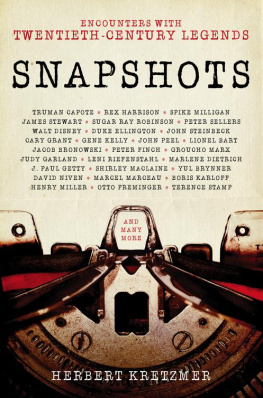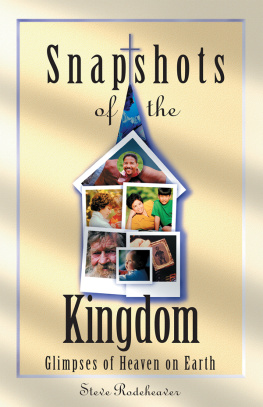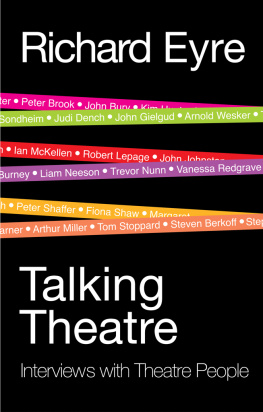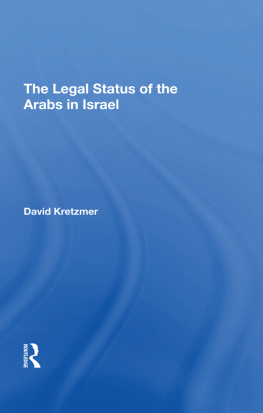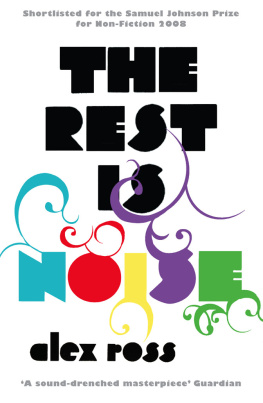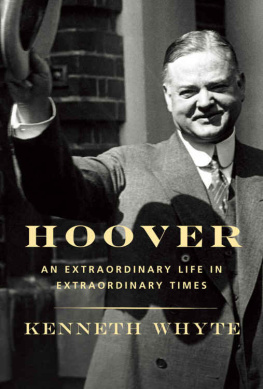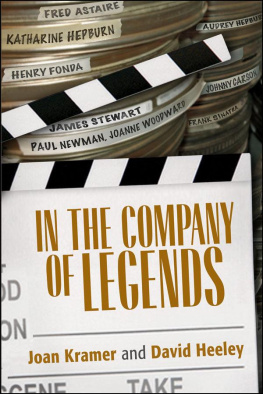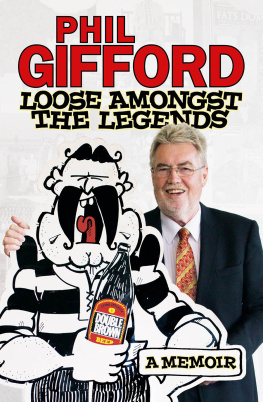Thanks are also due to my wife Sybil for her unfailing help in putting the book together, and to my daughter Danielle for the cheerful manner in which she undertook the complicated business of seeking out and clearing all the photographs between these covers.
Thanks, too, to Clive Hirschhorn and Alice Peacock for their valuable advice and assistance.
T his is a book very largely about stars and celebrities, not all of them admirable. One or two proved to be positively hateful. Yet they all had one thing in common: they possessed an aura that made them unique in a way that mattered. And, of course, all were famous.
I caught the fame bug early. I was about eight years old when I was allowed to see a movie for the first time. It was a musical called Gold Diggers of 1933 and featured a batch of wonderful songs and, I recall, an ambitiously staged finale My Forgotten Man which pleaded the cause of the neglected American veterans of the First World War.
I was transfixed. I loved the lilt and lurch of the songs, the free and easy dialogue, the gorgeous girls with their lip-gloss, tight blonde curls and endless legs. I walked home in a state of euphoria. I had seen a promised land.
My revelatory encounter with Gold Diggers of 1933 took place in Kroonstad, a one-horse town in the central flatlands of South Africa, where I was born in 1925. (The town was actually named after a horse called Kroon who had pulled its rider to safety out of a swollen river.) Kroonstad boasted one high school, one winding river flanked by weeping willows, and a single cinema called the Empire, though few people called it that, favouring the quaint South African term bioscope, pronounced bye-scope.
My mother, an immigrant from Eastern Europe, had decreed that my brothers and I could see one film every Saturday afternoon, giving us each a sixpenny coin for the entrance ticket, plus a penny for sweets from Mr Perrys shop next door. You could buy a lot of different sweets for a penny back then.
That single visit to the bio as we called it, and my introduction to Hollywood glamour, changed my life. I couldnt wait for Saturday afternoon to come around. Whether it was smiling chorus girls or the antics of the Marx brothers, I knew I wanted to belong to a world that gave so much pleasure and enjoyment. Indeed, I was so passionate about my weekly visits to the Empire that, if my mother wanted to punish me for any reason, she would, in what I perceived to be an act of calculated cruelty, cancel my next visit to the bioscope, inducing gasps of disbelief.
In all I saw about fifty movies a year, thus feeding an addiction shared by millions of my generation across the English-speaking world, a freemasonry of obsessed young geeks who eventually knew the names, not only of all the leading stars, but all the lesser, supporting players whose faces and voices became as recognisable and familiar to us as those of my own family, teachers and neighbours.
Even today, across a reach of three-quarters of a century, I could, without difficulty, reel off their names by the score
Edward Everett Horton, Hugh Herbert, George Zucco, Guy Kibbee, Franklin Pangborn, Herman Bing, Eric Blore, Mischa Auer, Beulah Bondi, Billy Gilbert, Grant Withers These were my heroes and I wanted to know more about them. What were they really like? What made them who they were? Clearly I was star-struck, and as I passed out of my childhood and teens and became an adult, I was eager to become a part of their world.
I grew up and left my riverside hometown to become a newspaperman as well as a lyricist, first in Johannesburg, later in London, where I live today. Along the way, I spent about a year in Paris, playing the piano in a St Germain-des-Prs bistro in return for a hot evening meal and trying to write a novel in a Left Bank garret (but couldnt stand the solitude). As a journalist I interviewed, over the years, hundreds of actors, writers, prizefighters, singers. For eighteen years I reviewed plays for the London Daily Express. As a lyricist I wrote songs for films, stage, television and the pop music market, achieving considerable success with lyrics for Peter Sellers and Sophia Loren (Goodness Gracious Me), for the French singer Charles Aznavour (She) and, finally, to my surprise, hitting undreamed-of heights by providing the lyrics for the still-running stage behemoth Les Misrables, created originally by Alain Boublil and Claude-Michel Schnberg.
But it was newspapers that gave me my start in show business.
Constrained by unforgiving Fleet Street deadlines, the interviews that I did for the pieces Ive included in this selection seldom lasted more than 60 minutes. Some were completed in half that time. These are indeed snapshots, but an image caught on the run can often reveal more than youd get from a considered studio portrait.
All magazine editors know that a famous face on the front cover, particularly that of a young and desirable female, will stimulate circulation. No great mystery there. Everybody loves a star and wants to be drawn nearer to the unknowable secrets that lie at the heart of stardom, distancing the legend from the commoner.
From my parents, who arrived in South Africa from Lithuania in the early years of the twentieth century, I learned civility and table manners. But it was the movies and the stars who appeared in them who taught me how to behave in a wider society; how, for instance, to conduct oneself at a party, what to wear, how to ask a girl to dance, how to withstand the taunts of school bullies. In such matters one could expect little practical help from parents who themselves were strangers in a strange land, coping with unfamiliar challenges and whose command of the English language was sometimes shaky.
In many ways it was Hollywood that guided and educated me by providing new and powerful mythologies. Let me give you one illustration of this. When John F. Kennedy was assassinated in Dallas on that fateful Friday in 1963 I was called on within an hour to create a song about the event to be included in the edition of That Was the Week That Was due to be aired on BBC television on the following night.
How does one write a song about so shattering an event? How does one avoid bathos and sentimentality? The answer, wholly inspired by the movies, came to me during the night. I would write a song in the American Western tradition, a song that might have been written a century ago, which made no specific reference to JFK. The components Wild West, shoot-outs, high noon would be totally familiar to a modern audience from dozens of Hollywood Westerns.
A young man rode with his head held high
Under the Texas sun
And no one guessed that a man so blessed
Would perish by the gun
Lord, would perish by the gun
My confidence in the use of the Western metaphor was not misplaced. It was immediately understood. Within a few days the song, called In the Summer of His Years, was recorded by a dozen American vocalists including the great gospel singer Mahalia Jackson. Thank you, Hollywood.
As you will see, there are very few businessmen, scientists or military men in this book. The majority of people Ive included are, in the broadest sense, entertainers and celebrities who have spent their lives in the white glow of fame. They stand out in the crowd. That is what has intrigued me about them. They are the shining exceptions to the rule.

